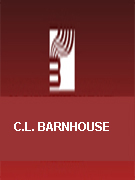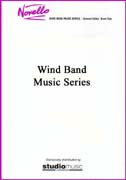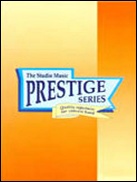Results
-
 £39.60
£39.60Mt. Hood Portrait (Concert Band - Score and Parts)
A delightful medley of familiar carol favorites arranged using the famous bass line from Pachelbel's Canon in D. Included are "Deck the Halls", "Good King Wenceslas", "The First Noel", "Up on The Housetop" and "Jolly Ol' St. Nickolas". Skillfully arranged to get the most from young musicians, the unique sounds of this number will add a sparkle to your holiday concert.
Estimated dispatch 7-14 working days
-
 £69.99
£69.99Music for the Youngsters Wind Band Set (Score & Parts)
An easy suite with short parts for winds and percussion. 1. Entry - festive intrada 2. Choral - question and answer in a solemn choral 3. Tune - attention to articulation 4. Canon - many possibilities 5. Penta - eastern sounds 6. Swinging Out - a swinging encore piece 06:30
Estimated dispatch 7-14 working days
-
 £104.99
£104.99Partita Piccola Wind Band Set (Score & Parts)
As the title suggests, this work is a partita: it consists of a number of variations on a chorale melody. The partita has been popular for centuries, especially when it comes to organ music. Henk van Belcum, who is active in the choir world, chose for his Partita Piccola the German hymn Wunderbarer K?nig as a starting point. Partita Piccola consists of four variations and a choral setting. After a majestic opening fanfare, the second variation follows, based on a canon by Pachelbel. H?ndel's Sarabande is the basis of the third variation. Next comes the chorale setting, after which the work ends festively with a dance that has been written in the form of a courante. Partita Piccola is an asset for church services and for concert platforms. 0:08:00
Estimated dispatch 7-14 working days
-
 £37.95
£37.95SYMPHONY No.2 (Novello Symphonic) Score only - Bedford, David
Symphony No.2 contains four movements and a coda, all played without a break, following the traditional symphonic pattern. The Introduction presents the main thematic material of the piece which is characterized by rising and falling 5ths a semitone apart. The Quaver Machine has a repeated, relentless constant quaver pulse from the vibraphone. The harmony circles around only 3 chords and the section builds with more and more instruments being played in harmony and in canon. A shift in tonality gradually leads to Adagio, an almost opulently romantic presentation of the main theme with a rippling accompaniment. After a massive climax, the music leads to Finale with the main theme presented as an Ostinato gradually introducing the full band to another large climax. Gradually, everything quietens down for the Coda, a varied repetition of the Introduction but ending with a last reminiscence of the Adagio. Duration: 14 mins.
Estimated dispatch 7-14 working days
-
 £67.32
£67.32To The Stars!
Driving percussion motifs, dramatic brass and woodwind flourishes combine for an exciting opening to this bold fanfare for younger bands. Featuring the winds, a contrasting canon provides an intriguing middle section. The persistent drive of the opening returns for a bold coda that brings the work to an exhilarating close. Perfect for opening any concert program.
Estimated dispatch 7-14 working days
-
 £164.95
£164.95Venetian Spells (Concert Band - Score and Parts) - Ellerby, Martin
A charming evocation of this great Italian City. The four movements each pay homage to a composer who has been associated with Venice in the past.Movements:Concertante (Antonio's Allegro)Pas de Deux (Igor's Lament)Vespers (Claudio's Sunset)Festivo (Giovanni's Canon)Duration: 15:00Recorded on QPRM129D VENETIAN SPELLS, Central Band of the Royal Air Force
Estimated dispatch 7-14 working days
-
 £37.95
£37.95Venetian Spells (Concert Band - Score only) - Ellerby, Martin
A charming evocation of this great Italian City. The four movements each pay homage to a composer who has been associated with Venice in the past.Movements:Concertante (Antonio's Allegro)Pas de Deux (Igor's Lament)Vespers (Claudio's Sunset)Festivo (Giovanni's Canon)Duration: 15:00Recorded on QPRM129D VENETIAN SPELLS, Central Band of the Royal Air Force
Estimated dispatch 7-14 working days
-
 £236.00
£236.00Pome symphonique en forme d'ouverture - Paul Gilson
In September 1925, on the occasion of the sixty-fifth birthday of their 'master', seven students of Paul Gilson gathered to form the first composers' collective in Belgian national music history. The members of Les Synthtistes (the Synthetists) are Ren Bernier, Francis de Bourguignon, Gaston Brenta, Tho Dejoncker, Marcel Poot, Maurice Schoemaker and Jules Strens. Their intent is twofold and both theoretical and practical. Les Synthtistes want to distinguish themselves as the 'Brussels seven' by breaking away from the prevailing late-romantic music of their time. Their theoretical aim is to synthesize the modern tendencies in music from 1925 onwards, to connect with the 'acquisitions of contemporary music' and to apply them within balanced and well-defined forms. Their practical goal is to make it easier to find a stage to perform their new symphonic music by uniting. In a period when there is no professional symphonic orchestra in Belgium, apart from the opera orchestra, they compose and transcribe their original symphonic works for wind band. They work together with Arthur Prevost and the Royal Band of the Belgian Guides which grew into a model instrumentation of 85 musicians during the interwar period. Thanks to Prevost and the Guides a unique collection of original, modern music for wind band by Les Synthtistes can be heard on the Brussels concert stages during the interwar period. Because only a few works of this unique, forgotten collection of 75 works were published, this unique canon remained largely unknown. Thanks to a historical study of sources by Luc Vertommen, these works for wind band are now, a century after their creation, made accessible and recorded for the first time.
Estimated dispatch 7-14 working days
-
 £236.00
£236.00Gil blas - Jules Strens
In September 1925, on the occasion of the sixty-fifth birthday of their 'master', seven students of Paul Gilson gathered to form the first composers' collective in Belgian national music history. The members of Les Synthtistes (the Synthetists) are Ren Bernier, Francis de Bourguignon, Gaston Brenta, Tho Dejoncker, Marcel Poot, Maurice Schoemaker and Jules Strens. Their intent is twofold and both theoretical and practical. Les Synthtistes want to distinguish themselves as the 'Brussels seven' by breaking away from the prevailing late-romantic music of their time. Their theoretical aim is to synthesize the modern tendencies in music from 1925 onwards, to connect with the 'acquisitions of contemporary music' and to apply them within balanced and well-defined forms. Their practical goal is to make it easier to find a stage to perform their new symphonic music by uniting. In a period when there is no professional symphonic orchestra in Belgium, apart from the opera orchestra, they compose and transcribe their original symphonic works for wind band. They work together with Arthur Prevost and the Royal Band of the Belgian Guides which grew into a model instrumentation of 85 musicians during the interwar period. Thanks to Prevost and the Guides a unique collection of original, modern music for wind band by Les Synthtistes can be heard on the Brussels concert stages during the interwar period. Because only a few works of this unique, forgotten collection of 75 works were published, this unique canon remained largely unknown. Thanks to a historical study of sources by Luc Vertommen, these works for wind band are now, a century after their creation, made accessible and recorded for the first time.
Estimated dispatch 7-14 working days
-
 £123.20
£123.20Rcitatif et Ronde - Francis de Bourguignon
In September 1925, on the occasion of the sixty-fifth birthday of their 'master', seven students of Paul Gilson gathered to form the first composers' collective in Belgian national music history. The members of Les Synthtistes (the Synthetists) are Ren Bernier, Francis de Bourguignon, Gaston Brenta, Tho Dejoncker, Marcel Poot, Maurice Schoemaker and Jules Strens. Their intent is twofold and both theoretical and practical. Les Synthtistes want to distinguish themselves as the 'Brussels seven' by breaking away from the prevailing late-romantic music of their time. Their theoretical aim is to synthesize the modern tendencies in music from 1925 onwards, to connect with the 'acquisitions of contemporary music' and to apply them within balanced and well-defined forms. Their practical goal is to make it easier to find a stage to perform their new symphonic music by uniting. In a period when there is no professional symphonic orchestra in Belgium, apart from the opera orchestra, they compose and transcribe their original symphonic works for wind band. They work together with Arthur Prevost and the Royal Band of the Belgian Guides which grew into a model instrumentation of 85 musicians during the interwar period. Thanks to Prevost and the Guides a unique collection of original, modern music for wind band by Les Synthtistes can be heard on the Brussels concert stages during the interwar period. Because only a few works of this unique, forgotten collection of 75 works were published, this unique canon remained largely unknown. Thanks to a historical study of sources by Luc Vertommen, these works for wind band are now, a century after their creation, made accessible and recorded for the first time.
Estimated dispatch 7-14 working days
